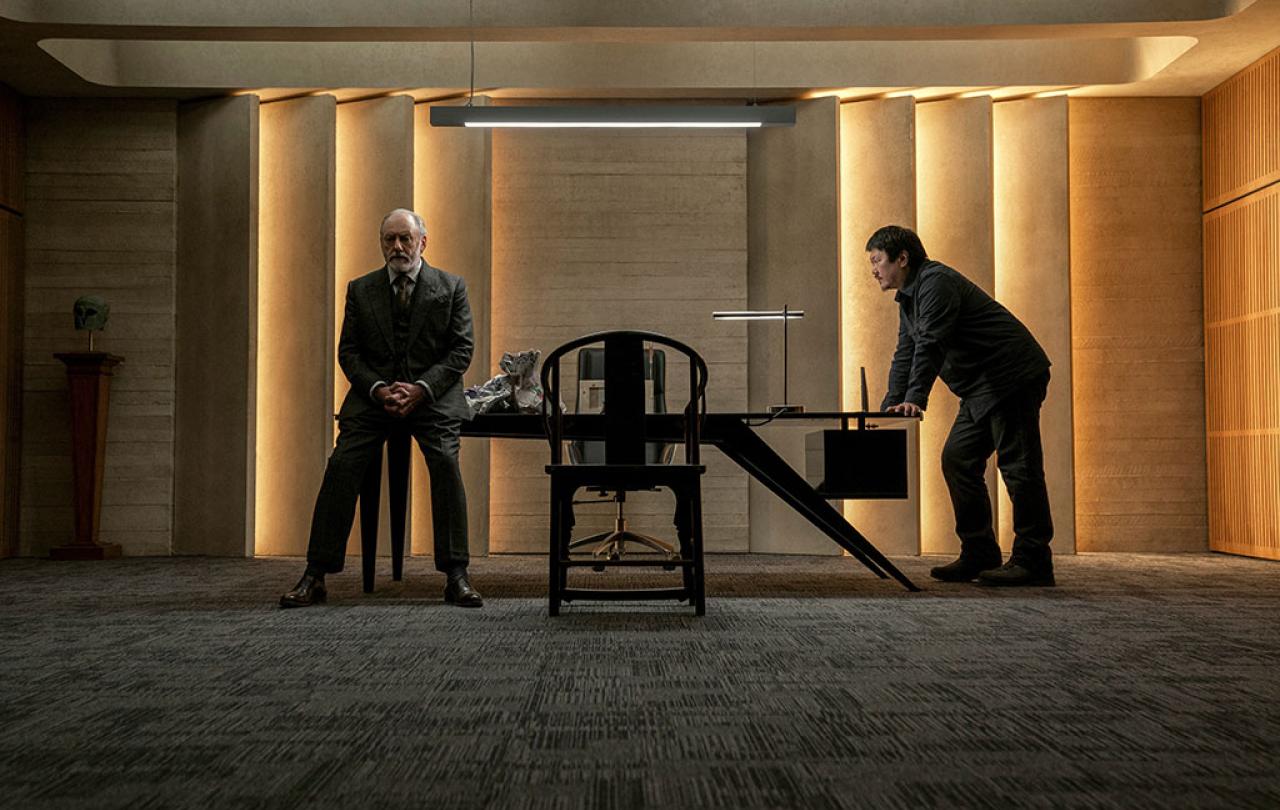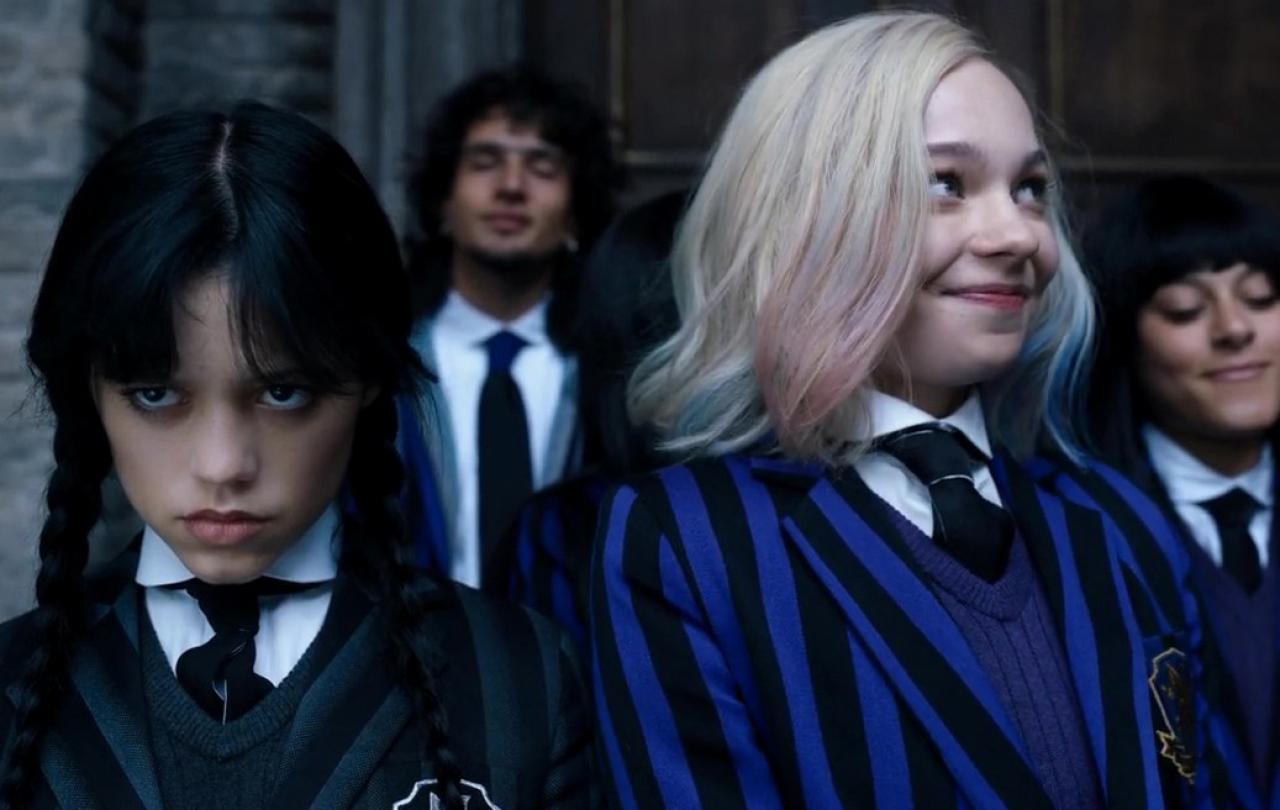
If you are prone to nightmares or paranoia you might want to steer clear of the first season of Netflix’s sci-fi epic, 3 Body Problem. Adapted from Cixin Liu’s multi award-winning Remembrance of Earth’s Past trilogy, the story starts in the Chinese Cultural revolution of the 1960s and ends twelve million years in the future. Mercifully the narrative is non-linear, so we’re spared a minute-by-minute account. It begins as a global mystery - scientists all over the planet are taking their own lives in mysterious circumstances – and ends with advanced alien weaponry collapsing the universe to a single dimension. All based on a true story, apparently.
Why the paranoia? At the heart of both Liu’s novels and the Netflix adaption, is a particularly terrifying solution to the Fermi Paradox. Enrico Fermi was one of the physicists working on the Manhattan Project (played by Danny Defari in the Christopher Nolan depiction of it in Oppenheimer), who presented his now famous paradox to his colleagues at Los Almos. The paradox goes like this: in a galaxy of billions of stars similar to our sun it is almost certain that advanced alien life is out there, and yet we have not received any convincing evidence of their existence. This, it seems, requires some explanation.
Interestingly, this question was also the starting point of C.S. Lewis’ sci-fi cycle The Cosmic Trilogy, and lies behind the title of its first book, Out of the Silent Planet. According to Lewis, the Earth has been placed under a kind of galactic quarantine, as a result of the fall of humanity, nothing and no-one is allowed in or out. The solar system is teeming with life, but we are partitioned from it. We’ve been blocked from the cosmic WhatsApp group for breaching behaviour standards. The aliens are out there but they’re keeping clear. We are the silent planet.
Cixin Liu however opts for a darker and more disturbing solution to Fermi’s question, which provides the title of the second book in his trilogy, The Dark Forest. The aliens are out there, but it is not we who have been silenced, it is they who are silent. The universe, according to this theory, is like a forest filled with predators and the most sensible thing any intelligent life can do is hide in the undergrowth to avoid attracting attention. Telegraphing our existence into the void by sending signals into space is to naively invite destruction. Alerting the universe to our presence is an act of existential self-harm. The universe is silent because everyone is hiding. For Lewis the universe shone with a love from which we had been excluded, for Liu it is saturated with malice from which we should exclude ourselves.
If Nietzsche was right, that we can survive any how as long as we have a why, then Liu’s characters are saddled with the opposite burden: endless hows and no why.
It probably isn’t too much of a spoiler to acknowledge that the inevitable happens. Aliens are contacted. They do make plans to invade. It is arguably a bit more of spoiler to give away exactly how this happens. The distance between them and us is so vast that, even travelling at one percent lightspeed it will take their invasion fleet four hundred years to get here. And in the meantime, just to ensure we can’t mount any meaningful defence against them, they fold a planet-sized computer into a photon-sized particle and send it to earth to sabotage all technological development. They can watch our every movement, overhear every conversation. We know they are coming and can do almost nothing about it. The bodies of suicides hanging in the fog from every lamppost lining the Thames underline the overriding despair. It is deliciously bleak. I did not sleep well after watching it.
Liu’s brilliance is not in doubt. The Netflix adaptation can barely capture the fireworks of creative inventiveness that crowd every page of his books (indeed the producers even dropped the definitive article from the book's title). In China, his fellow science fiction writers simply call him ‘Da Liu’ (Big Liu) in honour of his works of towering imagination. But I can’t help feeling that the overall atmosphere of The Three Body Problem is an example of what the theologian Carver Yu, another Chinese author, claimed characterised our culture: technological optimism and literary despair. Liu’s characters respond to the relentless encroachment of a malevolent universe with endless technological innovation. They possess an inexplicable will to survive in a cosmos where no one would wish to live. If Nietzsche was right, that we can survive any how as long as we have a why, then Liu’s characters are saddled with the opposite burden: endless hows and no why. They are thirsting for purpose while drowning in applications.
What struck me most watching the Netflix adaptation was that it seemed to extend the experience of living in a post-industrial society to the whole universe. Our sense that many of the organisations to which we owe our allegiance are clever but inhuman, technologically advanced yet amoral, is expanded to fill the farthest reaches of our imagination. Of course, human beings have always done this. Our ancestors saw faces in the clouds and gods in the constellations. We peer into the emptiness of the skies and populate them with our fears and hopes. Faced with the Copernican revolution and the rise of science, Pascal anticipated the cosmic horror of Liu by nearly four hundred years in confessing, ‘the eternal silence of these infinite spaces fills me with dread.’ The Three Body Problem, unlike Lewis who saw planet Earth as an aberration in an otherwise benevolent cosmos, takes our global technological arms-race and makes it the ultimate reality of the entire universe.
The crucial point is that we are not obliged to populate the blank canvas of the cosmos with the malice of Liu or the terror of Pascal.
The Three Body Problem then, like much science fiction, is a valuable and ingenious thought-experiment, but not one I wish to dwell on for too long. I prefer to contrast it with something closer to the cosmology that informed C.S. Lewis. One in which the core operating principle of everything is not the necessity of violence, but the indispensability of love. Something akin to Teilhard de Chardin’s assertion that in the dreams, wonder, exploration and imagination of love, a thread is woven that reaches the very heart of the universe. Despite all appearances to the contrary, love is the deepest reality of all.
This assertion is problematic in many ways. Not least in the face of the evident brutality and violence that traumatises human life. But even more fundamentally than that, how can we intelligibly assert the primacy of love while gazing out at a vast indifferent universe? What are we to do with those infinite silent spaces that so terrorised Pascal?
Perhaps we can try another thought-experiment. This one is drawn from the work of philosopher Chris Barrigar. He calls it the Agape/Probability account. The full argument is long and detailed, so there is no time to explain it all, but the broad brushstrokes are enough. Here’s the thought. What if we live in exactly the kind of universe required to produce creatures who can freely choose to live with self-giving love? They couldn’t be forced or coerced into it, but the conditions could be set in place that would lead to the emergence of such beings. The principles of ‘asymptotic’ statistics suggest that some things may not be determined but they can be so highly probable as to be inevitable. Barrigar asserts that the appearance of a species with the capacity to love was a cosmic inevitability. What is required to turn this possibility into something pretty much certain? Two things – lots of opportunities and lots of time. In other words, with apologies to Carl Sagan, if we want creatures capable of love, we need to build a universe.
Of course, a universe like that – a universe like ours – will throw up many other things in addition to love: violence, rock music and apples pies. But the crucial point is that we are not obliged to populate the blank canvas of the cosmos with the malice of Liu or the terror of Pascal. The cold silence of space does not in itself contradict our intuitive sense that the capacity to love is somehow ultimately significant. On the contrary, when we look at the vast distances between the stars, we could be looking at the minimal amount of spaciousness required to bring about beings with the capacity for self-giving love. At the very least, it’s a thought-experiment worth trying.





